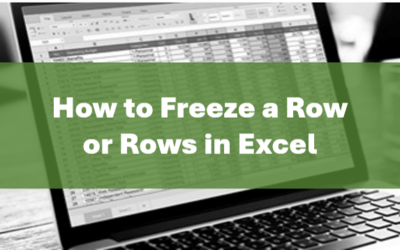Try These Shortcuts for Manipulating Controls in Design View in Microsoft Access
by Avantix Learning Team | Updated October 14, 2022
Applies to: Microsoft® Access® 2010, 2013, 2016, 2019, and 365 (Windows)
Controls are objects that appear in various sections in a form or report (such as a text box or label control) and may be bound to a source or unbound. You can manipulate controls in a number of ways in Design View in both forms and reports in Microsoft Access.
Recommended article: 10 Microsoft Access Tips for Creating Select Queries
Do you want to learn more about Microsoft Access? Check out our virtual classroom or in-person classroom Access courses >
You can use the following shortcuts when you're manipulating controls in Design View but also try them in Layout View.
Remove a control from a control layout
If you are having difficulty moving or otherwise manipulating a control, it may be in a control layout (somewhat like being in a group in other programs). If a control is in a control layout, you can remove it from the control layout. To do this, select the control in Design View, right-click on it, select Layout from the context menu and then select Remove Layout.
Select all controls
To select all controls, in Design View, click in a blank area and then press Ctrl + A.
Move a control
To move a control, select it in Design View and then press any of the arrow keys.
Nudge a control
To nudge a control, select it in Design View and press Ctrl + an arrow key.
Increase the width of a control
To increase the width of a control, select it in Design View and press Shift + right arrow.
Decrease the width of a control
To decrease the width of a control, select it in Design View and press Shift + left arrow.
Increase the height of a control
To increase the height of a control, select it in Design View and Press Shift + down arrow.
Decrease the height of a control
To decrease the height of a control, select it in Design View and press Shift + up arrow.
Move an attached label or text box separately
Labels are normally attached to other controls such as text boxes. To move an attached label or other control separately in Design View, drag it by its top left handle.
Separate an attached label and its control
To separate an attached label from another control (like a text box), select the label in Design View, press Control + X, click somewhere else on the form on report and then press Ctrl + V to paste it.
This article was first published on April 2, 2017 and has been updated for clarity and content.
Subscribe to get more articles like this one
Did you find this article helpful? If you would like to receive new articles, JOIN our email list.
More resources
Key Features and Benefits of Microsoft Access
How to Filter a Report on the Fly in Microsoft Access
10 Techniques for Designing Forms in Microsoft Access
How to Convert a Microsoft Access Report to PDF (3 Ways)
10 Useful Microsoft Access Shortcuts When You're Working with Controls on Forms and Reports
Related courses
Microsoft Access: Introduction
Microsoft Access: Intermediate / Advanced
Microsoft Access: Introduction to VBA (Visual Basic for Applications)
Our instructor-led courses are delivered in virtual classroom format or at our downtown Toronto location at 18 King Street East, Suite 1400, Toronto, Ontario, Canada (some in-person classroom courses may also be delivered at an alternate downtown Toronto location). Contact us at info@avantixlearning.ca if you'd like to arrange custom instructor-led virtual classroom or onsite training on a date that's convenient for you.
Copyright 2024 Avantix® Learning
You may also like
How to Replace Zeros (0) with Blanks in Excel
There are several strategies to replace zero values (0) with blanks in Excel. If you want to replace zero values in cells with blanks, you can use the Replace command or write a formula to return blanks. However, if you simply want to display blanks instead of zeros, you have two formatting options – create a custom number format or a conditional format.
What is Power Query in Excel?
Power Query in Excel is a powerful data transformation tool that allows you to import data from many different sources and then extract, clean, and transform the data. You will then be able to load the data into Excel or Power BI and perform further data analysis. With Power Query (also known as Get & Transform), you can set up a query once and then refresh it when new data is added. Power Query can import and clean millions of rows of data.
How to Freeze Rows in Excel (One or Multiple Rows)
You can freeze one or more rows in an Excel worksheet using the Freeze Panes command. If you freeze rows containing headings, the headings will appear when you scroll down. You can freeze columns as well so when you scroll to the right columns will be frozen.
Microsoft, the Microsoft logo, Microsoft Office and related Microsoft applications and logos are registered trademarks of Microsoft Corporation in Canada, US and other countries. All other trademarks are the property of the registered owners.
Avantix Learning |18 King Street East, Suite 1400, Toronto, Ontario, Canada M5C 1C4 | Contact us at info@avantixlearning.ca







